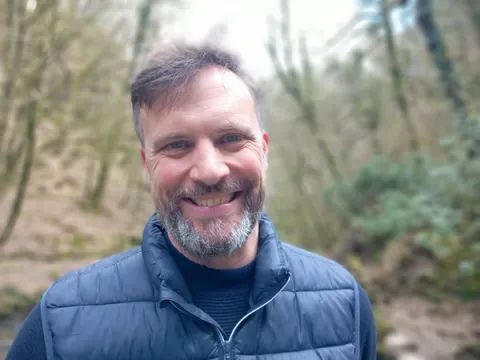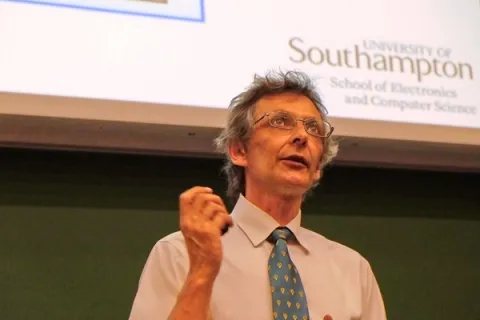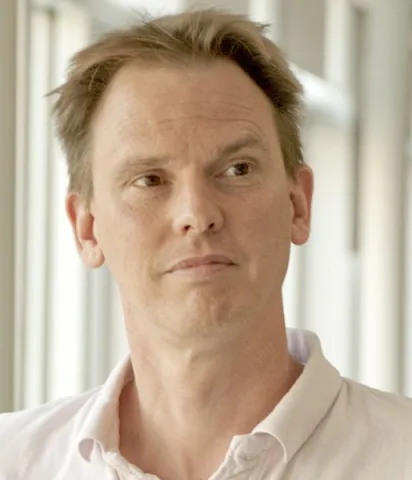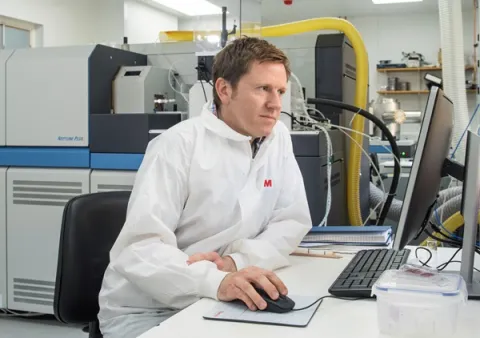Project overview
The emergence of new species is controlled by the link between environmental cues and organismal responses during life, but the contrasting temporal and biological scales involved create major problems for empirical study. As a consequence, the role of developmental plasticity during the emergence of new species is poorly understood. The mature fossil phylogeny and unprecedented geochemical understanding of planktonic foraminifera is built on their astonishingly abundant, complete fossil record. We consider this system an ideal window into processes that many groups of organisms experienced historically, but which are not preserved in enough abundance for analysis. PISTON will stimulate further development of theoretical models of speciation by providing the first empirical tests of key assumptions that underpin important areas of macroevolutionary theory, community ecology and palaeoclimate reconstruction.
Life is a journey. As we grow older, we change. Sometimes we respond in the spur of the moment. Occasionally, an event has long-lasting consequences in spite of any change in circumstance and shapes our outlook far into the future.
This future flexibility, or a lack thereof, also applies to the traits like size and weight that influence our daily risk of death and our reproductive success. Some of these traits retain flexibility throughout life, whereas others can only change in a fixed early window. As humans, we are far more likely to shift weight gain trajectories before six months of age than when older.
Any ability to flexibly adjust traits can boost survival chances in new or changing environments, but also provides the means to innovate and so express new combinations of traits. Flexibility as a means of innovation might promote the divergence of ancestral organisms into new species, but also might not because such flexibility would mean that species can already deal with whatever circumstances they encounter, which would in turn remove the pressure for any innovation to become hardwired into their DNA.
The long timescales over which this hardwiring plays out complicates collection of data. We don't know whether future flexibility or a lack of it is more likely to catalyse change into new species. In this project, we will contribute this increasingly requested data and therefore provide the first evidence if a lifetime of flexibility, or a stubborn refusal to change, influences the emergence of new species.
Planktonic foraminifera are single-celled organisms that live in vast numbers in all the world's oceans. While chemical analysis of their fossil remains has generated a remarkably continuous record of past climate change, each individual also retains a complete record of its size and shape at each stage along its journey through life.
These growth stages can be revealed by state-of-the-art imaging technology, which has sparked a digital revolution in how biologists study life on Earth. To study evolution, we need to study differences among lots of individuals. We need to know how and why these differences change through time. This need to measure lots of individuals means that the current practise of a person pointing and clicking on a computer screen to identify distinct parts is too slow. Computer programmes that provide a faster, more repeatable and less biased way of identifying and analysing such parts are now available, completing the toolkit needed to build big databases.
By bringing together lessons from diverse scientific disciplines, we propose to use the same fossil specimens to collate records of an individual's journey through life and the environment it experienced every step of the way, both of which were changing from day-to-day, millions of years ago.
While the fossil record of planktonic foraminifera provides the necessary timespan and abundance, new computer programmes and imaging technology complete the toolkit jigsaw to investigate for the first time if certain parts of an individual's journey through life are more influential than others in determining the eventual evolutionary destinations of its species.
Our unique, direct link between organism and environment lets us study the dynamic journey through life in the static death of the fossil record. The fundamental limitation to the current ways we study how new species emerge is the lack of repeated samples through time to follow the genesis of novel lifeforms, and explicitly targeting this limitation using state-of-the-art approaches from multiple scientific disciplines means we will deliver a breakthrough in attempts to answer one of the most fundamental of all biological questions: how do differences among individuals make differences among species?
Life is a journey. As we grow older, we change. Sometimes we respond in the spur of the moment. Occasionally, an event has long-lasting consequences in spite of any change in circumstance and shapes our outlook far into the future.
This future flexibility, or a lack thereof, also applies to the traits like size and weight that influence our daily risk of death and our reproductive success. Some of these traits retain flexibility throughout life, whereas others can only change in a fixed early window. As humans, we are far more likely to shift weight gain trajectories before six months of age than when older.
Any ability to flexibly adjust traits can boost survival chances in new or changing environments, but also provides the means to innovate and so express new combinations of traits. Flexibility as a means of innovation might promote the divergence of ancestral organisms into new species, but also might not because such flexibility would mean that species can already deal with whatever circumstances they encounter, which would in turn remove the pressure for any innovation to become hardwired into their DNA.
The long timescales over which this hardwiring plays out complicates collection of data. We don't know whether future flexibility or a lack of it is more likely to catalyse change into new species. In this project, we will contribute this increasingly requested data and therefore provide the first evidence if a lifetime of flexibility, or a stubborn refusal to change, influences the emergence of new species.
Planktonic foraminifera are single-celled organisms that live in vast numbers in all the world's oceans. While chemical analysis of their fossil remains has generated a remarkably continuous record of past climate change, each individual also retains a complete record of its size and shape at each stage along its journey through life.
These growth stages can be revealed by state-of-the-art imaging technology, which has sparked a digital revolution in how biologists study life on Earth. To study evolution, we need to study differences among lots of individuals. We need to know how and why these differences change through time. This need to measure lots of individuals means that the current practise of a person pointing and clicking on a computer screen to identify distinct parts is too slow. Computer programmes that provide a faster, more repeatable and less biased way of identifying and analysing such parts are now available, completing the toolkit needed to build big databases.
By bringing together lessons from diverse scientific disciplines, we propose to use the same fossil specimens to collate records of an individual's journey through life and the environment it experienced every step of the way, both of which were changing from day-to-day, millions of years ago.
While the fossil record of planktonic foraminifera provides the necessary timespan and abundance, new computer programmes and imaging technology complete the toolkit jigsaw to investigate for the first time if certain parts of an individual's journey through life are more influential than others in determining the eventual evolutionary destinations of its species.
Our unique, direct link between organism and environment lets us study the dynamic journey through life in the static death of the fossil record. The fundamental limitation to the current ways we study how new species emerge is the lack of repeated samples through time to follow the genesis of novel lifeforms, and explicitly targeting this limitation using state-of-the-art approaches from multiple scientific disciplines means we will deliver a breakthrough in attempts to answer one of the most fundamental of all biological questions: how do differences among individuals make differences among species?
Staff
Lead researchers
Other researchers
Collaborating research institutes, centres and groups
Research outputs
Alex Searle-Barnes, Anieke Brombacher, Orestis Katsamenis, Kathryn Rankin, Mark Mavrogordato & Thomas Ezard,
2025, Journal of Micropalaeontology, 44(1), 107-117
Type: article
James Michael Mulqueeney, Tom H.G. Ezard & Anjali Goswami,
2025, BMC Ecology and Evolution, 25(1)
Type: article
L.E. Kearns, A. Searle-Barnes, G.L. Foster, J.A. Milton, C.D. Standish & T.H.G. Ezard,
2023, Paleoceanography and Paleoclimatology, 38(4)
DOI: 10.1029/2022PA004549
Type: article
Anieke Brombacher, Alex Searle-Barnes, Wenshu Zhang & Thomas Ezard,
2022, Journal of Micropalaeontology, 41(2), 149-164
Type: article
Alessio Fabbrini, Ilaria Zaminga, Thomas Ezard & B.S. Wade,
2021, Journal of Systematic Palaeontology, 19(13), 953-968
Type: article




